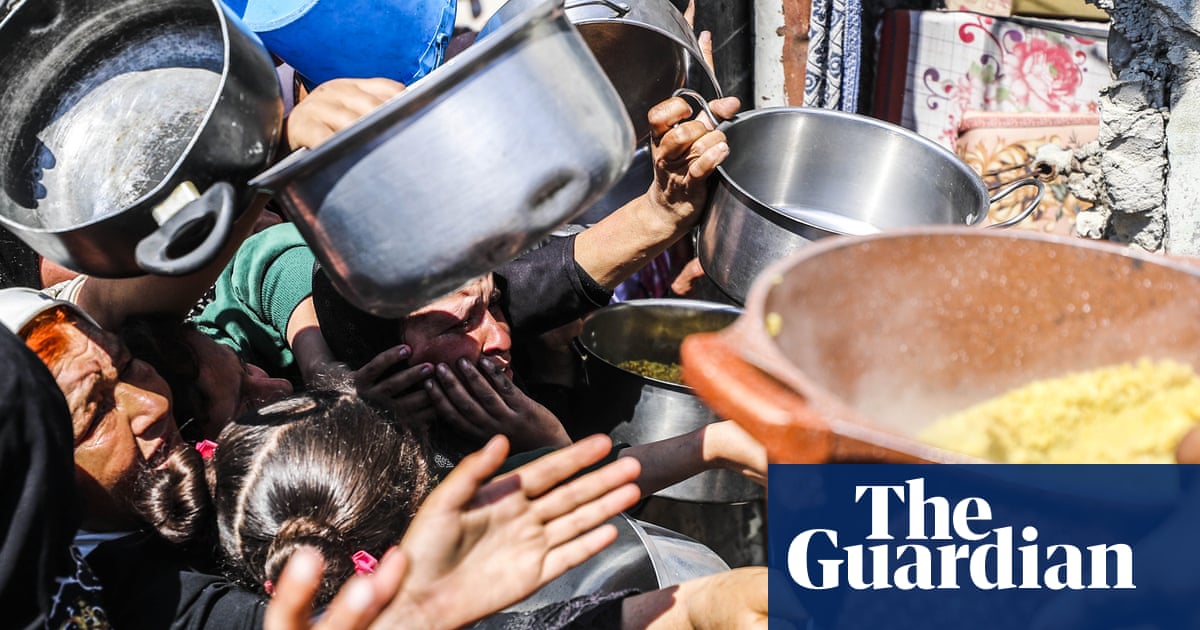Gaza has been hit by a wave of looting and theft as increasingly desperate Palestinians struggle to get food while criminal gangs exploit a breakdown in law and order.
Aid officials and witnesses in the devastated territory describe armed men attacking humanitarian warehouses, firefights over remaining food stores and a spate of stealing of supplies vital for survival, such as solar chargers, batteries, phones and cooking pots.
Gaza ison the brink of catastropheafter two months of a total blockade by Israel, aid workers say, with many families down to one meal a day. Spoiled flour is being sold for 30 or 40 times its usual price and no fuel is available other than wood or discarded plastic.
Medical officials report rising cases of acute malnutrition, and community kitchens that served 1m meals a day are shutting down for lack of basic essentials. Aid agencies say they have distributed all remaining stocks of food. Dozens of bakeries that supplied vital free bread closed last month.
“By the time a famine is declared, it will be too late. The crime wave is because you have 2 million or more desperate, traumatised people packed together with virtually no policing,” said one humanitarian official in Gaza.
Gaza City has been worst hit by the crime wave, though some incidents have been reported elsewhere in the territory.
One group of armed men broke into two or three bakeries in Gaza City last week, hoping to find flour, then targeted a soup kitchen when they found nothing. In another incident, thieves took a community kitchen’s last stocks as well as all its pots and pans.
In a third theft, staff at a distribution site run by an NGO were held at knifepoint as it was looted, while the United Nations Relief and Works Agency (Unrwa) said it had to evacuate staff on Wednesday after thousands of Palestinians breached its Gaza City field office and took medications. Louise Wateridge, a senior emergency officer at Unrwa, called the looting “the direct result of unbearable and prolonged deprivation”.
Witnesses described clashes between armed thieves and security guards in recent days.
Anas Raafat, a 25-year-old lawyer in Gaza City, said he and his family had been woken when armed gangs attacked a warehouse of a humanitarian aid organisation nearby. “By a miracle, none of my family members were injured. We lay flat on the ground for over two hours during the gunfire,” he said.
Ghadir Rajab, 27, said she saw another NGO’s warehouse under attack by thieves. “When we heard the sound of gunfire, I looked out the window and saw people rushing from all directions to storm the place, searching for food and water. Others were fleeing in fear of being hurt.
“There was a woman looking for her son, only to find out that he had been shot in the shoulder. She was running in the street … screaming “my son, my son!” She was begging for help, but no one paid attention, people were focused on stealing.Hungerhad blinded them.”
There have been widespread reports of violent arguments between neighbours and an increase in domestic violence. Petty theft has soared.
“There is no safety. We do not sleep at night at all. We take turns sleeping, leaving one person awake to guard against the rampant theft and looting,” said Mari Al Radea, 46, who recently fled the northern town of Beit Lahiya for Gaza City, where she and her nine children live in a tent.
“Most of the tents in our area have been robbed. We didn’t even attempt to find out who the thief was because there is no police or security presence.”
Al Radea described frequent clashes between hungry people or between shop security and looters. “Many confrontations also break out when there are attacks on food storage centres. Bullets often fall near us while we live in a nylon tent that offers no protection from gunfire,” she said.
During the ceasefire from mid-January to mid-March, the militant group Hamas deployed police to the streets of Gaza, but these have been withdrawn after being targeted by Israeli airstrikes. Gaza’s interior ministry, which is run by Hamas, said on Saturday its security forces had executed six suspects and punished 13 others with gunshots to the legs in the past two days over looting activities. The ministry also enforced a curfew starting on Friday in some of Gaza City’s main streets.
Looting in Gaza hit a peak late last year when convoys of aidwere systematically strippedas they moved into the territory after crossing entry points from Israel. In one incident, more than 100 trucks were taken and looted.
Israel accuses Hamas of stealing and reselling aid to finance its military operations. The militant Islamist organisation denies the charge, and aid officials say little humanitarian assistance went astray during the short-lived ceasefire that came into effect in January.
On Monday, Israeli officials said they would lift the blockade in order to implement a scheme to deliver aid as part of an“intensified” offensivein coming weeks. The plan involves a series of distribution hubs in the south of Gaza, which would be run by private contractors and guarded by the Israeli military. UN and other humanitarian officials have dismissed the scheme as unworkable, dangerous and potentially illegal under international law.
